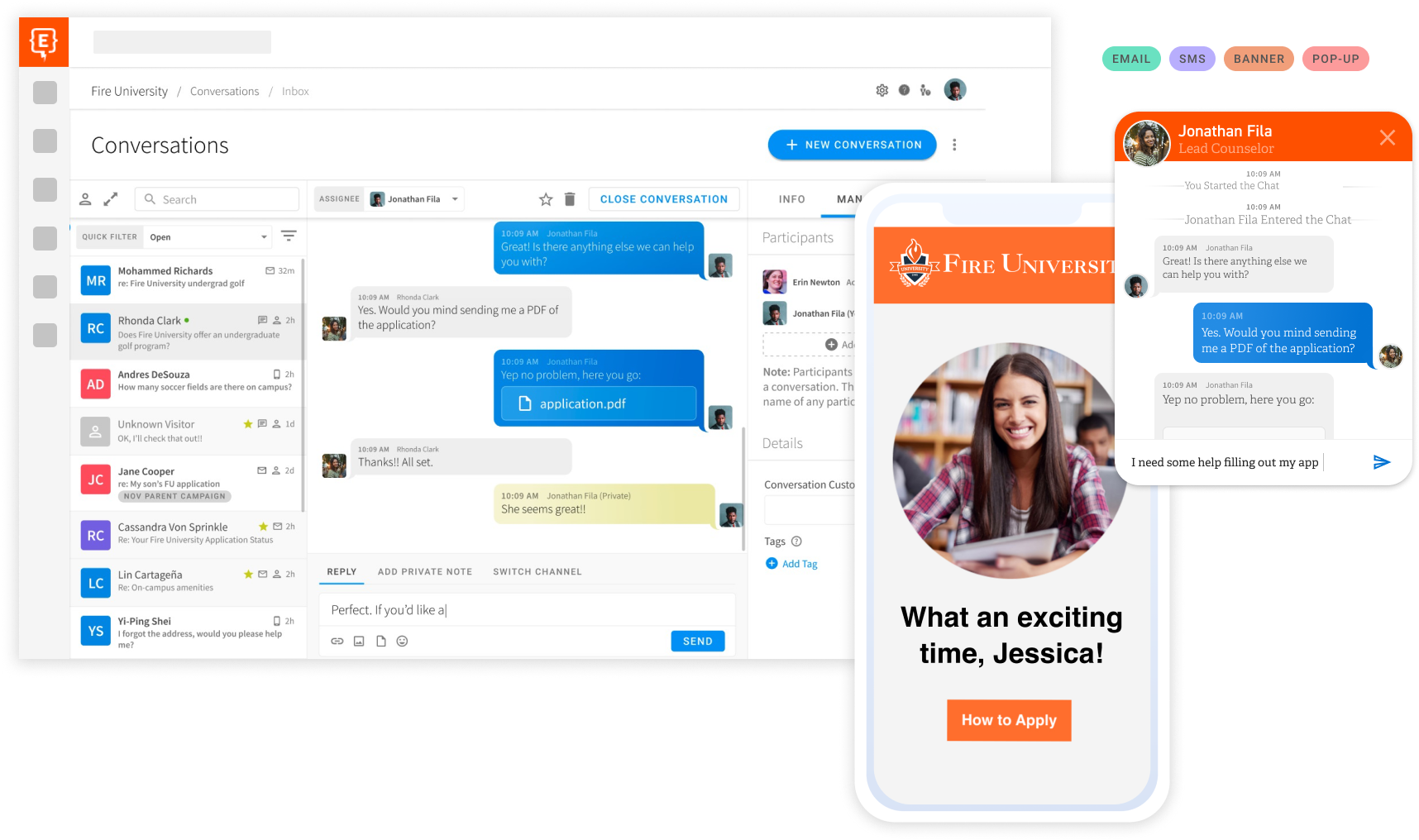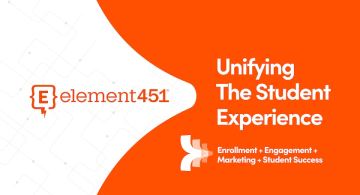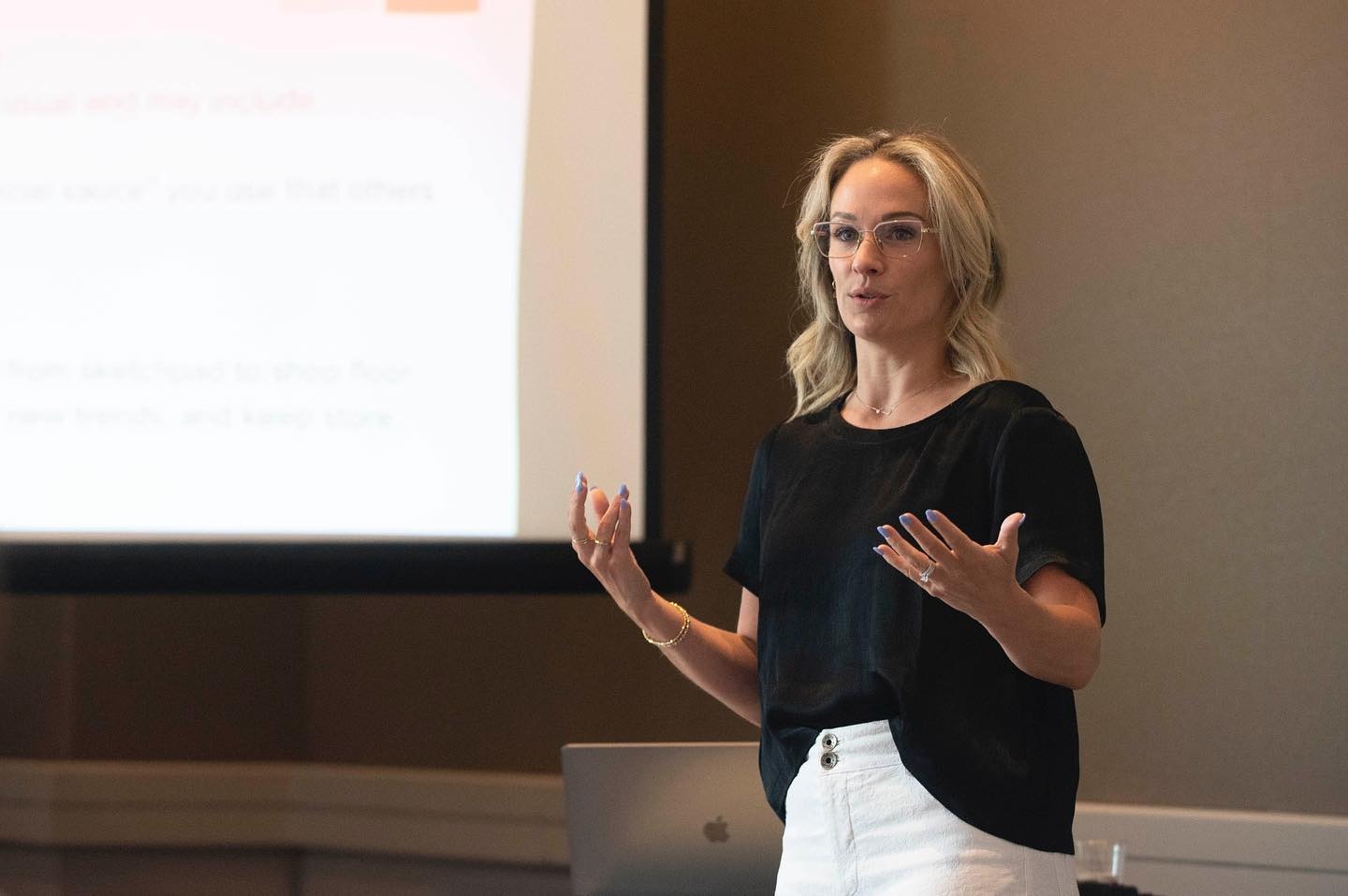Reverse Engineering Content with ChatGPT for Higher Ed
by Mallory Willsea · Updated Sep 13, 2024
AI's pivotal role in higher ed is paramount, especially in overcoming challenges like talent shortages. Element451 leverages AI, student behavioral data, and advanced marketing tools, empowering institutions throughout the student journey.
Our VP of Marketing and Demand Generation, Mallory Willsea, recently spoke with the SAFC KC Quarterly event with her presentation titled "ChatGPT & AI For Higher Ed."
She discussed the transformative potential of generative AI in enhancing student engagement within higher education. In this post, we’ll share 4 key prompts to reverse engineering content.
View the Slides
What is Reverse Engineering?
Reverse engineering content involves analyzing pre-existing content to comprehend their elements of success and subsequently utilizing these insights to craft your own engaging content.
With ChatGPT, you can expedite content creation by requesting it to rephrase existing content based on specific prompts. This efficiency allows your team to redirect their time and energy towards what truly matters: prioritizing the needs of students.
How to Support Students through Reverse Engineering
Generative AI enhances higher education by personalizing content, saving time through automation, and ensuring accessibility for all students, ultimately improving the learning experience.
Here are some effective prompt examples to effortlessly enhance your marketing campaigns for your school and boost engagement. Just input these examples into ChatGPT along with your school-specific content, and witness the results unfold like magic.
PROMPT 1 - Reverse Engineer content
Here is information about mental health services at [[Your-College]]
Respond "ready"
When using this example, make sure to extract information from your school's website and available resources to customize the output for your institution. The more details you can supply, the more precise the following prompts will be in delivering relevant content to your students and their families.
PROMPT 2 - Act as a content writing expert.
Write an email to the student body — from the director of counseling, advertising counseling appointments and encouraging new incoming students to take advantage of these services if they are struggling in their first semester.
Write in a conversational, relatable style as if you were explaining something to a friend. Use natural language and phrasing that a real person would use in everyday conversations.
- Keep it short and sweet
- Use action-oriented language
- Personalize the subject line with [First Name]
- Use numbers and emojis
- Ask a question
- Be clear and specific
PROMPT 3 - Craft an email subject line
Best practices for email subject lines include the following:
- Keep it concise: Subject lines should ideally be short and to the point. Aim for a length of 40 to 50 characters to ensure they are fully visible in most email clients.
- Be clear and specific: Clearly communicate the purpose or main point of your email. Avoid vague or misleading subject lines that may confuse recipients.
- Personalize when possible: If you have information about the recipient, such as their name or previous interactions, consider using personalization to make the subject line more engaging. People are more likely to open emails that feel tailored to them.
- Use action-oriented language: Make your subject line compelling by using action verbs or creating a sense of urgency. This can prompt recipients to open the email immediately or take a specific action.
- Avoid spam triggers: Stay away from using words or phrases that might trigger spam filters. Words like "free," "urgent," "limited time," and excessive use of exclamation marks can raise red flags.
Using these principles of [[Your-College]]’s students to better personalize the email to each population:
- Out of state
- In-state (Include your home state)
- Living on Campus
- Living off campus
- Student Athletes
- Undecided majors
PROMPT 4 - Create a social media post
You are a social media influencer with 2 million followers on LinkedIn. You write engaging and thoughtful LinkedIn posts that drive massive engagement.
Write a LinkedIn post about the benefits of counseling at [[Your College]]. Your audience is the entire student population.
A great LinkedIn post follows the following best practices.
- Have a Clear and Engaging Headline. Make sure the first line of your post is catchy and intriguing to prompt the audience to click "see more" if they're viewing from the LinkedIn feed.
- Use Short Paragraphs: Break up your text into short paragraphs of 1-3 sentences each.
- Utilize Bullet Points or Numbered Lists to make content easier to digest.
- Include 3-5 Relevant Hashtags
- Use Emojis sparingly and professionally
- Include a Call-to-Action (CTA) Encouraging the audience to engage with the post. use a CTA that asks the audience a question. Make the question easy to answer and has wide appeal.
Revolutionize Your Marketing Strategies
Reverse engineering content with ChatGPT, can be a game-changer in your marketing strategy. By analyzing successful content, crafting compelling emails, personalizing subject lines, and creating engaging social media posts, you can connect with your audience on a deeper level and drive substantial engagement.

Get A Demo of Element451
Students explore and pick where they’ll earn a degree in completely new ways. Welcome to the new world of enrollment, powered by Element451. We've been waiting for you.
Show Me More

About Element451
Boost enrollment, improve engagement, and support students with an AI workforce built for higher ed. Element451 makes personalization scalable and success repeatable.
Categories
New Blog Posts

The Definitive Guide
AI in Higher Education
Bridge the gap between the latest tech advancements and your institution's success.
Useful Links

Talk With Us
Element451 is the only AI Workforce Platform for higher education. Our friendly experts are here to help you explore how Element451 can improve outcomes for your school.
Get a Demo








